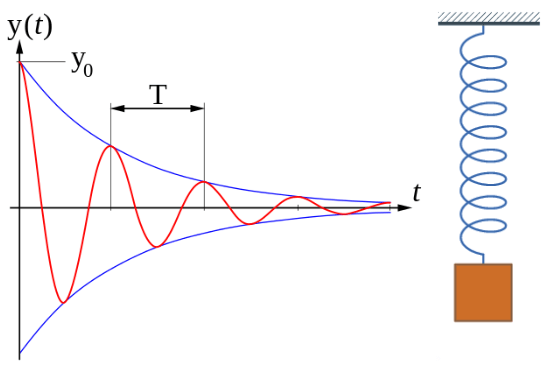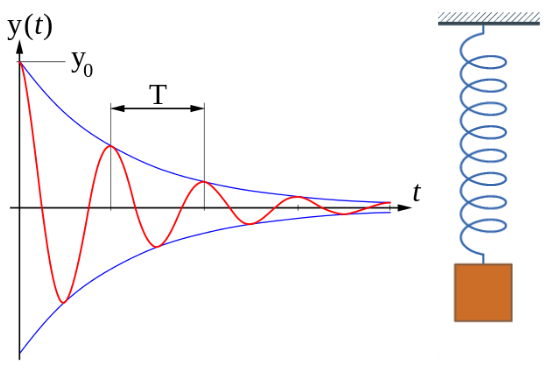
1. Resonance
When a system is subjected to external excitation, its forced vibration amplitude can become very large if the excitation frequency is close to one of the system's natural frequencies. This is known as resonance.
Systems have many natural frequencies, but we generally focus on frequencies in the lower range.
In physics, resonance refers to the phenomenon of two objects with the same vibratory frequency causing a third object to vibrate when one of them vibrates.
The term “resonance” is also used in mechanics to describe the phenomenon in which an object produces sound due to vibration at its resonant frequency.
For example, when two tuning forks with the same frequency are placed close to each other, one will produce sound when it vibrates and the other will also begin to vibrate and produce sound.
2. Vortex vibration
Vortex vibration refers to the vibration caused by the alternation of vortex shedding after flow around a solid body under the influence of the mean wind.
The study of vortex vibration in bridges is a field of aerodynamics.
Vortex-induced bridge vibration is a type of vibration that has characteristics of self-excited and forced vibration, with finite amplitudes.
It can keep the frequency induced by the vortex constant within a wide range of wind speeds, resulting in a “blocking” phenomenon.
Calculating the finite amplitude of the bridge vortex-induced resonance is a crucial but challenging problem.
Currently, a comprehensive theory for the analysis of bridge vortex vibrations has not been fully developed both nationally and internationally.
In practice, a combination of semi-theoretical and semi-experimental methods is used to approximate the amplitude of the vortex-induced resonance.
3. Vibration
Flutter refers to a self-excited vibration phenomenon caused by the interaction between aerodynamic forces and the elasticity and inertia of the structure. It is the result of the coupling between flow and structure.
Buffeting, on the other hand, refers to the forced response of a structure to periodic aerodynamic forces caused by unstable flow conditions, such as flow separation and boundary layer shock interference.
Therefore, under the traditional definition, classical flutter is a type of self-excited vibration, while buffeting is a type of forced vibration.
There is also a phenomenon known as stall flutter, which occurs at high angles of attack.
Some experts believe that this type of structural vibration, characterized by strong separation conditions, coexists with vibration and pounding.
4. Dynamics
Dynamic vibration ( Buffing) in aircraft refers to the vibration of aircraft components due to excitation of the separated air stream or wake, causing them to oscillate at their natural frequency.
A common example of a strike is a tail wing strike, which occurs when the tail is behind the wing, fuselage joint, or other components. The disturbance in the wake causes the tail to vibrate strongly.
High angles of attack can make an aircraft particularly prone to tail swings, which have been the cause of serious accidents in the past.
The wing can also suffer buffeting due to separation from its own airflow. In the transonic range, shock wave-induced boundary layer separation is another important cause of strikes.
Buffeting imposes limits on the available lift coefficient and Mach number of the aircraft. To avoid buffeting, the aerodynamic shape is normally corrected and the relative position between the tail, wing and fuselage is appropriately arranged.
Buffeting is a random vibration, but it is regular in the frequency domain, and the main peak of its power spectrum usually corresponds to the first natural frequency.
Although the strike does not immediately damage the aircraft structure, it increases structural stress, reducing the aircraft's fatigue life. It also has a negative impact on aerodynamic performance, the weapons system, mechanical and electronic instruments and equipment, as well as passenger comfort.
In serious cases, the blow can cause the pilot to lose control, putting the safety of the flight and the pilot at risk.
Therefore, buffeting is considered an important factor in aircraft design.
5. Abnormal
It is an abnormal vibration that occurs in a turbine compressor, also known as a vane compressor, when the flow decreases to a certain level.
Centrifugal compressors, which are a type of turbine compressor, are particularly vulnerable to surges.
The occurrence of vibration is related to the characteristics of machines and fluid piping. The greater the capacity of the duct system, the stronger the surge and the lower its frequency.
Overvoltage interrupts the regular flow of the medium within the machine, creates mechanical noise, causes strong vibration in its components and accelerates the wear of bearings and seals.
If vibration causes resonance in piping, machinery and its foundation, it can result in serious consequences.
6. Crusade
Cross vibration is a type of vibration that occurs in structures with complex and irregular non-aerodynamic sections, such as square, rectangular and other similar shapes.
The cause is that the lift curve has a negative slope, which creates a negative damping effect on the air lift, causing the structure to continuously absorb external energy and form a divergent vibration-like vibration.
Based on the generation mechanism, gallop can be divided into two types: wake and crossflow.
Wake is an unstable vibration caused by the downstream structure being excited by the flow passing through the floating front structure. Structures such as cable-stayed bridge cables and suspension bridge braces are more susceptible to wake galloping.
Crossflow is a self-excited vibration due to divergent bending caused by the negative slope of the lift curve. This negative slope causes the displacement of the structure to align with the direction of air force during vibration, causing the structure to continuously absorb external energy and resulting in unstable vibration.
Crossflow typically occurs in lightweight, flexible structures with non-aerodynamic angular sections, such as cables and braces in suspension bridge systems.
There is also the possibility of rampant divergence in other structures, such as steel girder bridges with a small width-to-height ratio, tall and flexible long-span cable-stayed bridges, suspension bridge towers, and main girders of continuous steel-frame bridges. during the construction phase of the maximum cantilever.
7. Vortex
Vortex street is a common phenomenon in fluid mechanics that is frequently observed in nature.
When a constant inflow passes around objects under certain conditions, vortices with opposite rotational directions and regular arrangements will periodically shed from both sides of the object, forming a Carmen vortex street after nonlinear action.
For example, if water passes over a pier or wind passes over a tower, chimney, or electrical wire, a Carmen vortex street will form. The phenomenon is named after Carmen, who was the first to propose its existence.
Prominent Chinese mechanical engineers Qian Xuesen, Guo Yonghuai and Qian Weichang worked in the Carmen laboratory.
If the alternating frequency of the vortex shedding coincides with the frequency of the object's acoustic standing wave, resonance will occur.
Many preheaters and industrial boilers are composed of circular tubes, and the fluid flowing around the circular tube can cause the alternating shedding of the Carmen vortex to vibrate the gas column in the preheater casing.
If the alternating frequency of the vortex street shedding coincides with the frequency of the acoustic standing wave of the object, it may cause acoustic resonance and cause the tube casing to vibrate violently. In severe cases, the vibrating drum of the preheater tube housing may become unstable or even break.
To avoid equipment damage, the natural frequencies of the piping and gas casing can be adjusted to scale them from the Carmen Street vortex shedding frequency, avoiding resonance.

























































